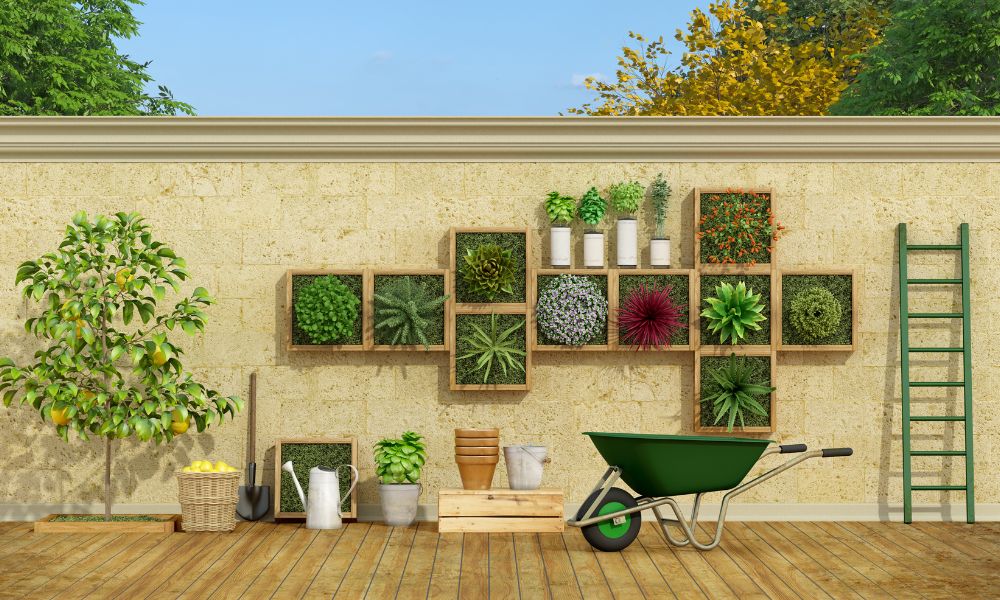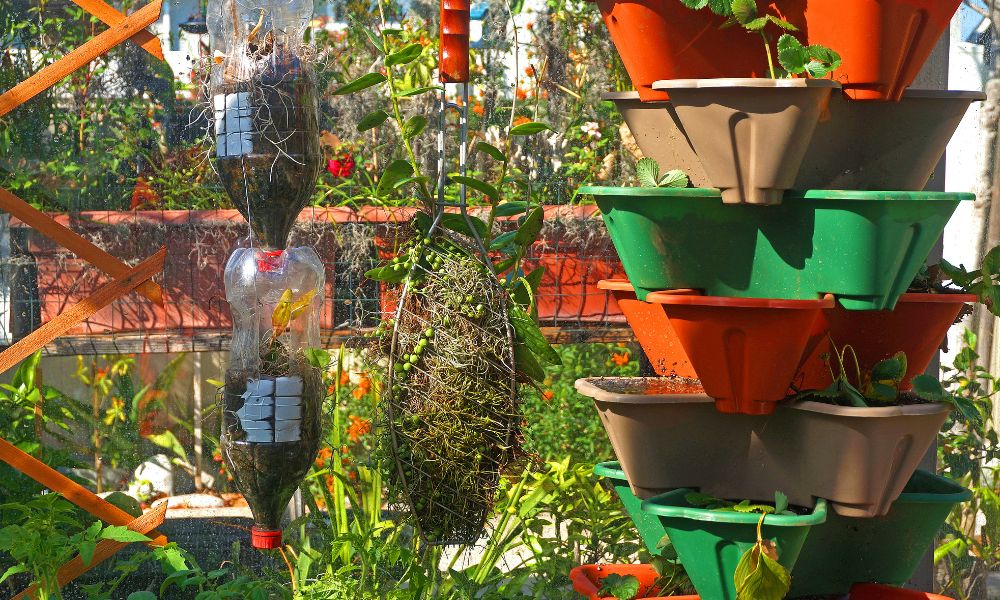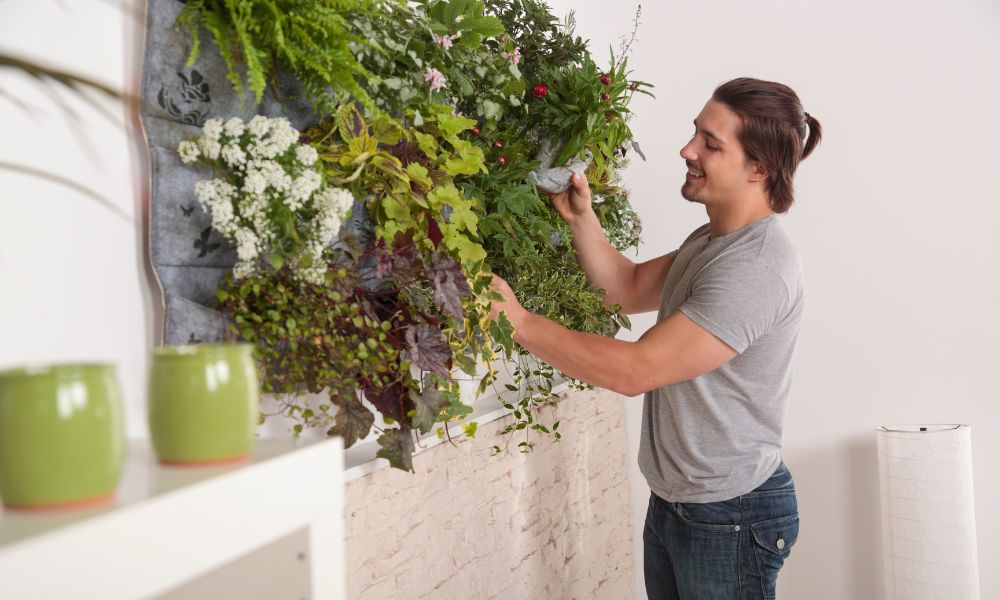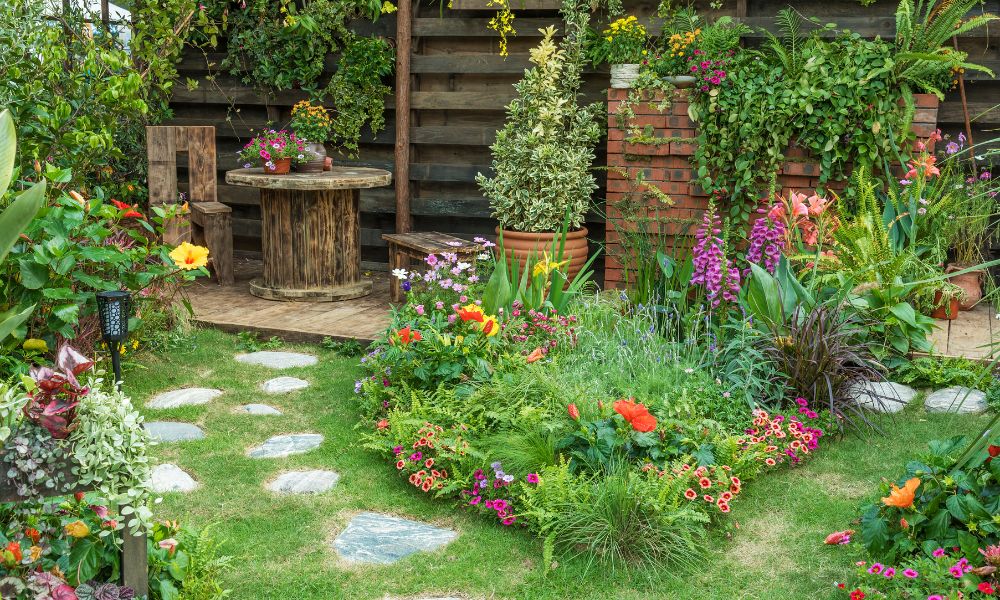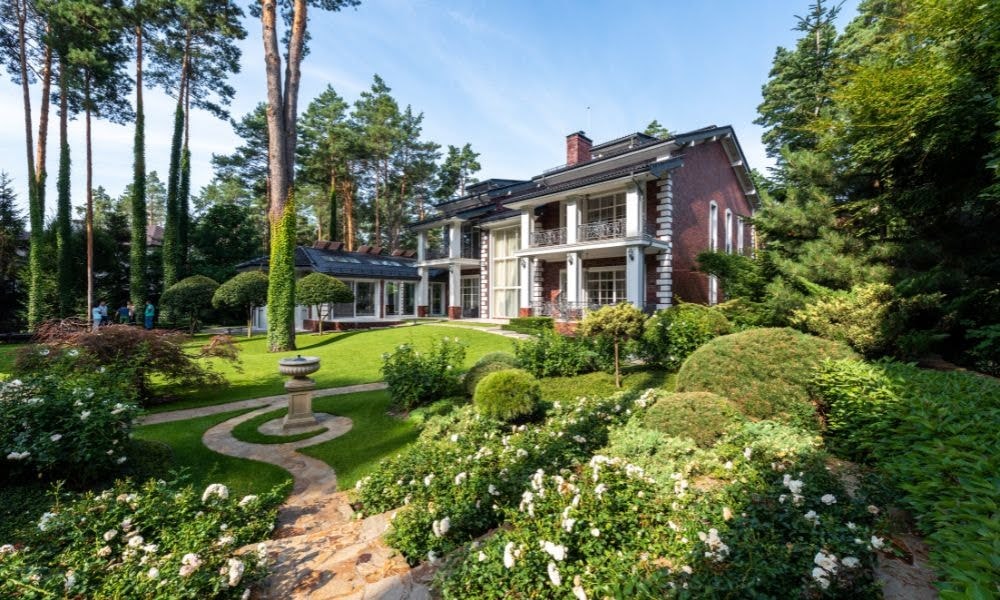Finding space for a garden in the city can feel impossible, but that hasn’t stopped people from finding solutions. Vertical gardens are becoming more popular as they offer an excellent way to grow more plants in small garden corners. These creative solutions allow you to turn unused walls, fences, and even recycled materials into lush growing spaces. Whether you’re looking to grow fresh veggies, fragrant herbs, or beautiful ornamental plants, vertical gardening makes it all possible, even in the smallest urban spots.
What makes vertical gardens so appealing is how easily they adapt to tight spaces. Imagine transforming a tiny balcony or that empty exterior wall into a thriving green oasis, full of leafy greens, climbing plants like pole beans, or a vertical herb garden. It’s the perfect blend of functionality and charm, making vertical gardens a must-have trend for urban dwellers who want to maximize every inch of their space.
Understanding Vertical Gardens
Vertical gardening has evolved from a simple solution for small spaces to an art form that enhances urban environments. Originating centuries ago, the concept has grown to include living walls, vertical vegetable gardens, and creative vertical herb gardens. These methods allow gardeners to grow everything from edible plants to climbing plants like cherry tomatoes and leafy greens, using structures like trellises, cattle panels, and even recycled materials like plastic bottles.
The benefits of a vertical garden go beyond saving space. They can improve air quality, provide insulation for buildings, and create green walls that bring nature into the concrete jungle. Living walls and other vertical structures are also a perfect solution for edible landscaping in urban areas where horizontal growing space is minimal. Vertical gardens are not only about functionality; they also enhance the aesthetic appeal of small urban spaces, transforming them into lush, green retreats.
Planning Your Vertical Garden
Creating a successful vertical garden starts with assessing your available gardening space and sunlight exposure. Knowing the right type of soil and having good drainage are also key factors in ensuring the success of your vertical vegetable garden. Succession planting is also a smart way to keep your garden producing throughout the growing season by rotating crops in raised bed systems.
When it comes to choosing plants, certain varieties are better suited for growing vertically. Climbing plants like pole beans and vining plants like summer squash thrive in vertical gardens, while bush beans and cherry tomatoes can be grown in hanging baskets or window boxes. Frame trellises or cattle panels offer support for heavier plants, while herbs and leafy greens can flourish in hanging pots or gutter gardens.
Companion planting is another great way to maximize yield and ensure plants grow in harmony. With a bit of creativity and thoughtful planning, a vertical garden can provide ample harvests even in the most confined urban spaces.
Innovative Vertical Gardening Systems
As vertical gardening continues to gain popularity, different systems have emerged to cater to various gardening needs. Let’s explore some of the most innovative systems transforming urban gardening.
Hydroponic Vertical Gardens
Hydroponics is a method of growing plants without soil, using nutrient-rich water to nourish the roots directly. In vertical gardens, hydroponic systems can stack layers of plants, making it possible to grow more in limited spaces. The benefits of hydroponic vertical gardens include faster plant growth and efficient water usage, making them ideal for small spaces where traditional soil gardening might be challenging.
Aquaponic Vertical Gardens
Aquaponics takes hydroponics a step further by incorporating fish into the system. In an aquaponic vertical garden, fish waste provides nutrients for plants, while the plants help filter and clean the water for the fish. This creates a symbiotic relationship between the plants and fish, resulting in a self-sustaining ecosystem. The advantages of aquaponic systems include reduced need for fertilizers and a closed-loop system that conserves both water and nutrients.
Modular Vertical Garden Kits
Modular vertical garden kits offer flexibility for those who want a DIY approach to their gardening space. These kits often come with stackable planters, irrigation systems, and various layout options, making them easy to customize according to the space available. The main benefits of modular kits are their ease of installation, versatility, and ability to fit into small spaces like balconies or compact patios. Popular kits available include modular wall planters and free-standing structures, providing the perfect solution for anyone wanting to add a green touch to their home without extensive gardening knowledge.
Living Wall Systems
Living walls, also known as green walls, are large vertical structures that support plants growing along the surface. These systems can be installed on the exterior walls of buildings or used as interior décor to bring nature indoors. In urban spaces, living walls are valued for their aesthetic appeal and practical applications, such as improving air quality and insulating buildings. Living walls can house various plant types, including vining plants and small herb gardens, creating a visually stunning and environmentally beneficial feature in any urban landscape.
Materials and Structures for Vertical Gardens
Vertical gardening for small spaces offer a range of possibilities when it comes to materials and structures. Many gardeners are choosing upcycled and sustainable materials to create unique growing spaces. Items like old wooden pallets, plastic bottles, and chicken wire can be repurposed to form planters or trellises, providing an eco-friendly solution that also adds a personal touch to your space.
For those who prefer a more streamlined approach, commercial vertical gardening systems offer pre-designed kits that are easy to install and maintain. Whether you go for DIY structures or ready-made systems, vertical gardening in a small space becomes an achievable goal with innovative designs like pallet planters, hanging pots, and window boxes, all of which maximize vertical space while adding charm and functionality.
Watering and Irrigation Solutions
Proper watering is key to maintaining a healthy vertical garden, especially in small spaces where water can drain quickly through layers of plants. Efficient methods such as drip irrigation can ensure that water reaches every plant evenly without excess runoff. Automated systems are also an excellent solution for busy gardeners, providing consistent hydration without the need for daily manual watering.
Water recycling systems, such as rainwater harvesting or using greywater, can further enhance sustainability. These methods help conserve water and reduce the garden’s environmental impact, making vertical gardens both low-maintenance and eco-friendly.
Lighting Solutions for Vertical Gardens
Lighting plays an essential role in the success of vertical gardens, particularly in urban environments where natural light may be limited. Maximizing sunlight by placing your garden in a spot that receives optimal exposure can significantly boost plant growth. For areas with insufficient natural light, artificial lighting, such as LED grow lights, can provide the necessary light spectrum for plants to thrive. Energy-efficient options, including solar-powered lights, are perfect for outdoor setups, ensuring that your vertical garden remains both effective and environmentally friendly without adding to energy costs.
Vertical Garden Maintenance and Care
Maintaining a vertical garden requires consistent attention, but with the right strategies, you can keep your plants healthy and thriving year-round. Below are some key tips to ensure your vertical garden remains in top condition:
- Check for overwatering or nutrient issues. Remove dead leaves to encourage growth.
- Clean containers and trellises regularly to prevent mold and mildew.
- Watch for pests like aphids and spider mites. Use organic pest control when necessary. Ensure good airflow to prevent fungal issues.
- Prune regularly to control plant size and encourage new growth. Rotate plants seasonally to maintain soil health and avoid nutrient depletion.
- Adjust watering and lighting for changing weather conditions. Mulch plants to retain moisture during hotter months.
- Feed plants with appropriate fertilizers to keep them nourished. Regularly replenish soil nutrients in containers to maintain healthy growth.
- Check supports and trellises for stability. Tighten or replace any damaged parts to keep your vertical garden secure.
Creative Vertical Garden Designs
Vertical gardens are not only functional but can also be incorporated creatively into interior spaces. They can be installed indoors, where they serve as natural art pieces, bringing a refreshing green element to rooms and improving air quality. Another popular use is transforming vertical gardens into privacy screens. These green barriers not only provide seclusion but also add beauty and a natural feel to outdoor spaces, perfect for patios or balconies.
Vertical gardens can also be seamlessly blended with existing architecture, whether mounted on walls or integrated into fences and trellises, making them an attractive and practical addition to any home or building.
Vertical Gardens for Food Production
Vertical gardening is an excellent method for growing edible plants in limited spaces. This approach makes it possible to grow fruits, vegetables, and herbs in areas where traditional gardening might be impossible. Vegetables like pole beans, cherry tomatoes, and leafy greens thrive in vertical gardens, as do herbs such as basil, mint, and parsley.
Urban farming has also embraced vertical gardening as a way to increase food production in densely populated areas. By scaling up vertical gardens, urban farmers can produce more food in less space, contributing to a sustainable and efficient food supply chain.
Challenges and Solutions in Vertical Gardening
Like any gardening practice, vertical gardening comes with its own set of challenges, especially for urban gardeners dealing with limited space and environmental constraints. One of the most common challenges is the lack of space for traditional gardening. However, innovative designs such as gutter gardens and pallet planters offer effective solutions for small areas.
Structural limitations can also pose a problem, but using lightweight materials and proper supports can help overcome these obstacles. Environmental constraints like limited sunlight or water access can be mitigated by using artificial lighting and efficient irrigation systems, ensuring that plants thrive in urban environments.
Embrace the Possibilities of Vertical Gardens
Vertical gardens offer endless possibilities for transforming small spaces into lush, productive oases. Whether you’re growing herbs, vegetables, or ornamental plants, vertical gardening allows you to make the most of limited space while bringing beauty and greenery into your home or urban environment.
With innovative designs, sustainable materials, and practical care strategies, anyone can cultivate a thriving vertical garden. Start small, experiment with different systems, and watch your garden flourish as you grow upward.


